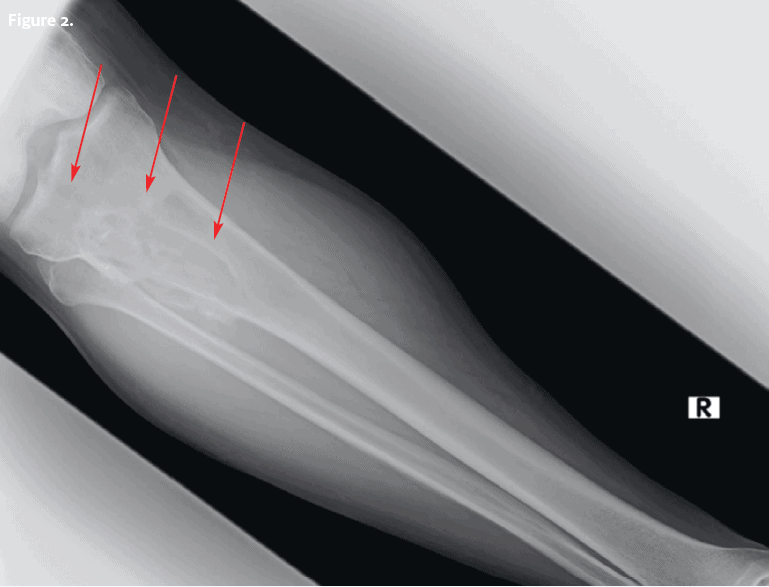Differential Diagnosis
- Metastatic disease
- Giant cell tumor
- Malignant transformation of a pre-existing bony dysplasia

Diagnosis
Aggressive expansile lesion proximal tibia with pathological fracture and malignant features. Proximal tibial diaphysis was an expansile lesion of 5.0 x 5.3 x 10.3 cm. The lesion has mostly lucent or cystic component with areas of amorphous calcifications within. Lesion is expansile with endosteal scalloping, bowing, and thinning of the overlying cortex. There is a focal anterior cortical break present at the site of the pathological fracture. There is abnormal periosteal new bone formation along the anterior surface in a sunburst pattern and overlying soft tissue swelling.
Learnings/What to Look for
- The sunburst appearance of periostitis occurs when the lesion grows too fast and the periosteum does not have enough time to lay down a new layer. Instead, the Sharpey’s fibers stretch out perpendicular to the bone
- Sunburst periostitis is classically associated with osteosarcoma, but can also occur with other aggressive bony lesions such as Ewing’s sarcoma or osteoblastic metastases (eg, prostate, lung or breast cancer)
Pearls for Urgent Care Management and Considerations for Transfer
- This patient is likely to require surgery, radiotherapy, and/or chemotherapy. Referral to an orthopedic oncologist is appropriate
Acknowledgment: Image and case provided by Experity Teleradiology (www.experityhealth.com/teleradiology).
